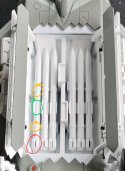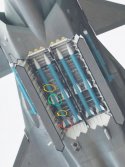True, but I think the underlying assumes are key here. You are assuming both to be powered in the terminal phase, while I am considering scenarios where the ramjet is still powered but the rocket has run out of propellant.
Modern counter AAM tactics is usually a game a attrition and range, where fighters try to bleed incoming missiles of all their propellant and energy before the missile can get close enough to engage, rather than super-manoeuvrability last minute extreme G jinx’s. As such, I value longer range over raw turning ability. Because even with the ramjet’s inferior terminal agility, it’s probably still far more than what fighters could hope to reliably shake off if it gets within range.


